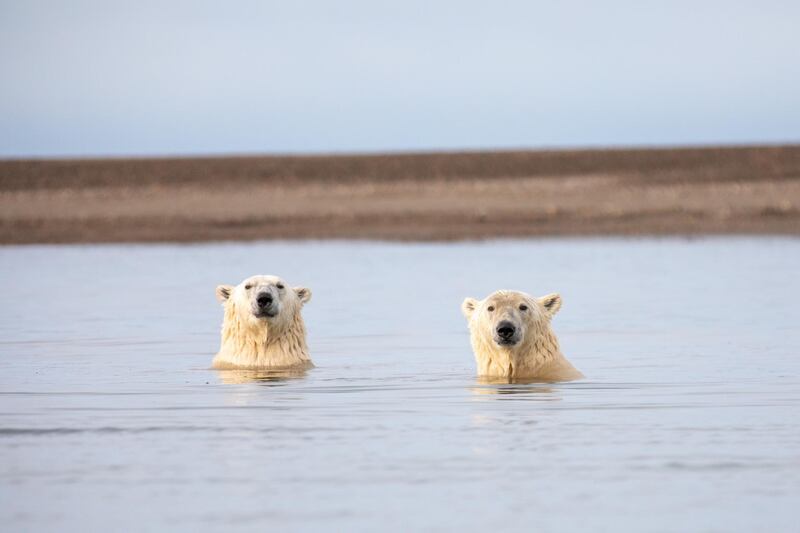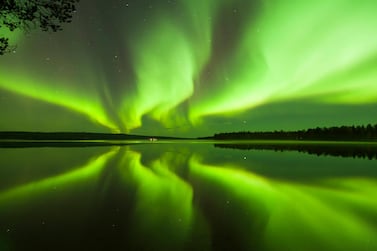Once upon a time, Fairbanks was regarded as Alaska’s, and so America’s, final frontier. Founded in 1903, just a few decades after the US had bought the territory from Russia, it initially surged as a gold rush town, luring prospective prospectors from across the world.
Today, with a population of more than 30,000, it's a much more recognisable American city, with malls and McDonald's, supermarkets and Starbucks. But while it might feel more normal these days, Fairbanks is still a city of extreme weather, where winters can see the temperatures hit -40°C. It may lie just outside the Arctic Circle, but, statistically, this is the coldest city in the US. However, as I find out over a week with Gondwana Ecotours, it is not anywhere near the northernmost.
Having met husband and wife guides Fred and Janet Vreeman in downtown Fairbanks, our small group is taken on a day-long tour of the city. The following morning, we are to take an hour-long flight north, into the true Arctic, to reach the remote settlement of Kaktovik.
As it turns out, that is easier said than done. With no major roads reaching this town at the edge of the North American mainland, we must rely on light aircraft, which are themselves held at the mercy of Alaskan weather.
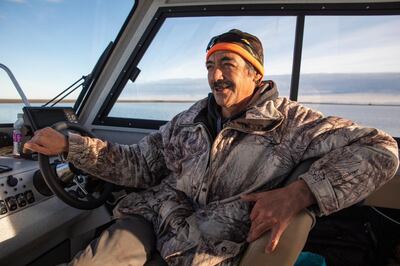
As we soon find out, this is as unpredictable as it is extreme. For our trip, it's not a blizzard that causes disruption, but a fog enveloping our destination. It takes five hours before our little Cessna is cleared to take off. Frustrating as this is, it somehow seems right that some of the continent's rarest prizes come with a little challenge.
Fairbanks is located between two mountain ranges and as we fly over the White Mountains, the state looks just as I'd always imagined it would: frozen, foreboding and extraordinarily beautiful. Before long, though, the land flattens out into vast wetland plains. We are at the end of summer and the permafrost has released huge amounts of standing water. These become homes to millions of insects, which in turn attract colossal numbers of migratory birds to feast in the short summer months.
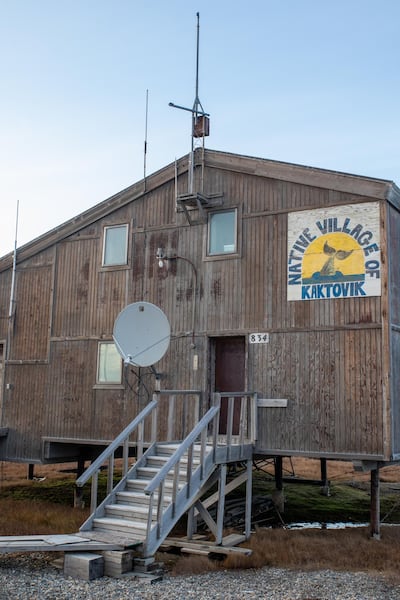
Kaktovik is the home of much larger creatures, however. There are about 400 people and 50 resident polar bears. The world's largest land predators are so numerous here that you can see them from the window of the plane.
"The native Inupiat people are allowed to kill three bowhead whales a year," Vreeman explains during the short bus transfer to our spartan accommodation. "Traditionally, they have always left the bones in a pile on sandbars out of the town, to try and keep the bears away from the people."
While that has been largely successful, it has likely attracted more bears to the area. Fred hasn’t been up here in over a year, but he’s been told that local government has ordered the hunters to instead dump the bones in the sea, in a bid to discourage the bears from visiting in such large numbers.
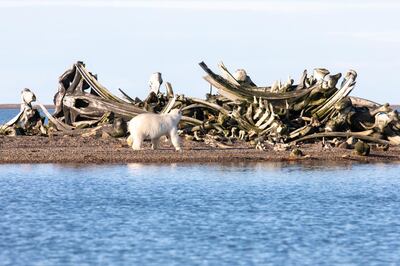
Local boat skipper and polar bear guide Bruce Inglangasask isn’t convinced of the wisdom of this plan. “Now we’ve just got a lot of confused, hungry bears,” he says sardonically.
From our point of view, it's just a relief that there are still bears at all. Inglangasask takes us out on a little boat and within 10 minutes, we've positioned ourselves a safe distance away from a pair of huge adolescents wrestling in the gentle surf at one of the sandbars. He insists what they're doing is play-fighting, but it's still pretty terrifying to imagine the damage that'd be done if the opponent wasn't an equally massive bear.
I'm fortunate that this isn't my first time seeing polar bears, but on other trips, spotting them felt like looking for shooting stars – not impossible, but far from guaranteed. Here, it's absolutely a case of how many, rather than if. To observe them over three days is of course no real observation at all, but it's hard to imagine a healthier nor more numerous population of bears anywhere on Earth.
The following day, we’re luckier still when we get Kaktovik’s rarest weather: glorious sunshine. On the water a little after dawn, the bears take on the hues of the sky, which is to say they appear pink, then golden – doubly so as their mighty frames are mirrored in the glassy waters of the calm High Arctic.
Gondwana’s tour spends three days in Kaktovik, long enough to fill several memory cards with polar bear close-ups. Our guides never let them come too near and we never get off the boats, but the experience feels incredibly intimate all the same.
Bruce tells us that despite this awesome display, in the two decades he’s been here, the number of bears has halved. When I ask why he thinks this is, the question is only half-spoken when he replies: “Climate change.”
When we finally leave, we fly an hour to the north west to reach Utqiagvik, the northernmost town on the North American continent. Formerly known as Barrow, it’s almost 10 times the size of Kaktovik, yet still feels like an outpost. The roads are unsealed and almost all the buildings have been constructed with warmth and durability in mind, aesthetics barely a consideration at all.
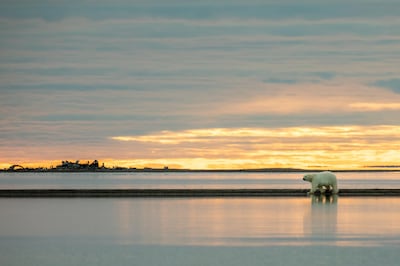
Between this and the testing weather, some new arrivals find life up here overwhelming. "If you're someone who wants to go to a mall every weekend or get a pedicure every Friday, then it's probably hard," says Dorothy Levitt inside the impressive Inupiat Heritage Centre in the heart of Utqiagvik. Nonetheless, around town, there are Polynesians, Macedonians and a lot of Thais who have chosen to build lives at the unlikely latitude of 71 degrees north.
Having spent her whole life here, Levitt is little concerned by the long, dark Arctic winters, and absolutely relishes the unyielding light of summer, which is a time of celebration. Part of the festivities are almost inevitably connected to hunting – for whales in spring and autumn, then walrus and other seals through the summer.
There are strict rules around the hunts and the distribution of the meat, which must only be shared equally and never sold. "It makes us really poor at economics," she says with a laugh. "We want to share everything all the time."
I wonder where a native person goes on holiday in a community like this. Perhaps to visit family in other parts of the High Arctic, or maybe to Scandinavia to see how they eke out their own living this far north?
"No, no," says Levitt, chuckling. "I like to go to Hawaii."
